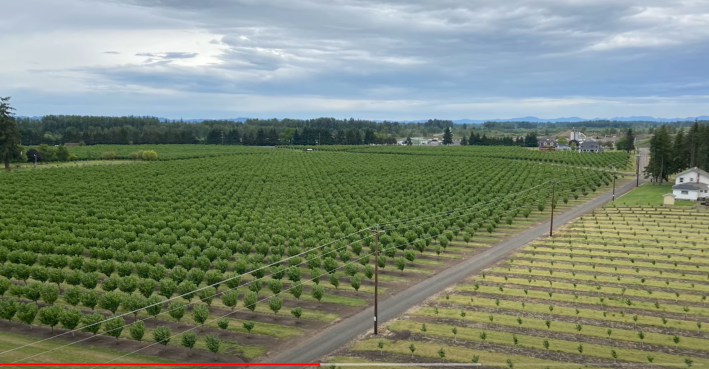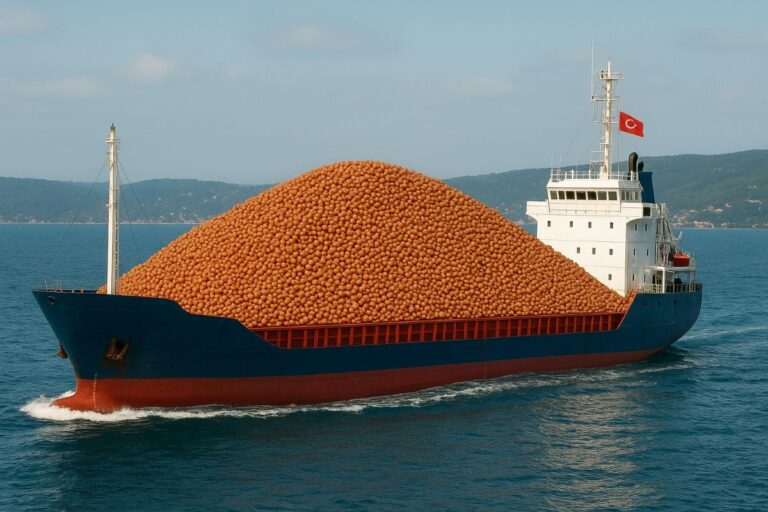The $1.18 per pound for the crop is down slightly from last year’s $1.22 but is likely to increase, growers say
Northwest hazelnut growers will receive a minimum initial price of $1.18 a pound for their crop this fall, the third highest starting minimum price ever, the industry said Friday.
The agreement, reached Wednesday between the Hazelnut Growers Bargaining Association and five packers, is down slightly from last year’s $1.22 initial minimum.
“It’s always nice to be higher, but the last 10-year average has been about $1 a pound,” said Eugene-area hazelnut grower Dwayne Bush. “We can still make money at that price, especially if the price moves up, which it has the last six or eight years or so.”
2014’s initial minimum of $1.70 a pound was the highest ever.
Oregon leads the nation in hazelnut production, accounting for nearly 100 percent of U.S. output, according to the Oregon Department of Agriculture.
Bush said the hazelnut harvest is getting underway and could be completed by mid-November.
Bush has 430 acres of hazelnuts in three orchards near Eugene, including a large orchard near Fern Ridge Lake. The crop is “looking pretty good,” he said.
Turkey is the world’s largest producer of hazelnuts.
About 60 percent of Oregon’s crop is exported, with China and Europe buying much of the harvest.
Terry Ross, manager of the Hazelnut Growers Bargaining Association, who represented growers in the negotiations with the packers, said several factors contributed to the decline from last year’s initial price, including a large Turkish crop, extensive carryover inventory from last year, and a plentiful supply of competing nuts, such as almonds, walnuts, pistachios and pecans.
Also, a relatively weak Turkish lira — which was worth slightly more than one-third of a U.S. dollar on Friday — is expected to make Turkish hazelnuts an attractive buy for international customers, which would hurt U.S. hazelnut exports.
About 650 growers are raising hazelnuts in Oregon, most of them in the northern Willamette Valley.
During the past 10 years, the amount of land in Oregon occupied by hazelnut orchards grew by 22,833 acres, bringing the total acreage of hazelnut orchards to 52,707, according to the state Hazelnut Industry Office.
Most of the state’s hazelnuts are grown in Marion, Washington, Yamhill and Clackamas counties.
Lane County, which in 2015 had 4,028 acres of hazelnuts, ranked fifth among the eight counties with the nut orchards, according to the Hazelnut Industry Office. At more than 100 years old, Dorris Ranch in Springfield is recognized as the nation’s first commercial filbert orchard.
Not many years ago, the state’s entire hazelnut industry was threatened by eastern filbert blight, an aggressive, deadly fungus that first appeared in Oregon in the 1970s, eventually spreading south through the Willamette Valley.
The disease forced farmers to drastically prune their trees, envelope them in clouds of fungicide, or cut them down.
A decades-long research effort to fight the disease was financed by a per-ton assessment paid by farmers. Conducted by OSU plant breeding experts, the research eventually led to the development of disease-resistant hazelnut varieties, including one called Jefferson that was released in 2009. These new, disease-resistant varieties are being planted to replace the sickly trees.
Northwest hazelnut packers Westnut, Willamette Hazelnuts, Denfeld Packing, George Packing and Northwest Hazelnuts participated in the price negotiations, representing about 85 percent of the volume of hazelnuts packed annually in the Northwest.
Even though the starting minimum of $1.18 a pound is less than last year, Northwest hazelnut growers can expect the price to increase in the coming months, said Doug Olsen, a north Willamette Valley grower and president of the Hazelnut Growers Bargaining Association. “Our thinking was that a price at this level will give the packers an opportunity to move the price up,” he said.
In 2014, the ending price was 6.5 percent higher than the initial minimum; in 2015, the ending price was 13 percent higher than the initial minimum.
The USDA’s National Agricultural Statistics Service estimates growers in the United States will harvest 38,000 tons this fall, or about 7,000 tons more than last year’s crop, which was hurt by drought.
Copyright: The Register-Guard






